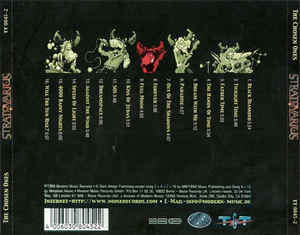

He chose to use a Colombian-Brazilian blend for the espresso and cappuccino rounds, telling me that blending was the norm at the time. Tim Wendelboe (centre) with Elias Roa on Finca El Suelo in Huila, Colombia. The mouthfeel can be really fatty and rich, which is quite unique to the Colombian coffees.” “In my opinion,” he says, “the best coffees from Colombia always have a very fruity cup, without being over fermented, and a lot of sweetness with a not-too-intense acidity. “ quite a big difference from today, where I not only know the basic info on the coffees I buy, such as variety, altitude and farm name, but also what date the coffee was harvested and from what part of the farm, as well as all the details on fermentation time, drying times, etc.”īut either way, he was sure that a Colombian coffee would perform well. I have no idea who produced it, where in Colombia it was from and what variety. “It was not so easy to get the information about the coffee,” he explains, “so the only thing I know is that it was a Colombian Excelso. When Tim competed, back in 2004, the World Coffee Championships were very different affairs. Credit: Project Origin Tim Wendelboe, 2004 WBC Sasa Sestic inspects young coffee saplings. By pushing these lighter fruits with a lighter grind, I need to up my dose to achieve more body.” “I also ground coarser because this can help us to extract florals and fruits out of the coffee. “I decided to dose my coffee a little bit higher to achieve more body within the cup,” he explains. You might also like Should The World Barista Championship Use a Compulsory Coffee?Īnd for the cappuccino, he adjusted the espresso recipe. “My extraction was only 19 seconds and the choice of grinder that I used really enabled us, with the ratio we used, to deliver a soluble extraction but at the same time a really refined and balanced taste experience,” he explains. However, Sasa counterbalanced it with a finer grind. “It still makes me smile when I think about it now it’s a coffee I think I will remember for my entire life.”Ī short extraction time like this could lead to sour coffee. Why? “In order to achieve the greatest balance of flavours as well as the flavours I was aiming for: plums and apricots, super sweet stone fruits, sparkling acidity,” he explains. When pulling his espresso shots, he used a faster extraction with 20.5 g in and 38.5 g out in over 19–20 seconds. “By adding the carbonic maceration coffee with the natural process coffee, we created a balanced and flavour-forward coffee.” “Natural process coffees are famous for distinct berry notes and I wanted to have a coffee that was flavour-driven, but clean and refined,” he says.

And by trying new things, we find new ways to highlight flavours.įor his cappuccino, he blended a carbonic macerated coffee with a natural processed one. Credit: Project Originįor Sasa, the coffee industry is one of experimentation.

And what’s more, by controlling the temperature inside the tanks, he can either draw out more sweetness or more complex acidity.ĭiscover the science behind Sasa’s carbonic maceration processing! Sasa considers it to combine the best elements of washed and dry/natural processing. Doing so slows down fermentation and consequently helps to produce a better flavour profile. This processing method consists of fermenting the cherries in a stainless-steel tank, into which carbon dioxide is injected and oxygen removed. Sasa explains, “Camilo and I started collaborating on a new technique for processing, not to create new flavours but to better express what was already there and make it more distinct.” This is an innovative fermentation method for which he took inspiration from the wine industry. So, we picked the Sudan Rume for its unbelievable sweetness and, as it is grown at an altitude of 2,000 m.a.s.l., the acidity was extremely complex, multi-layered, and sparkling.”īut that wasn’t the only thing that marked Sasa’s coffee as unusual: he also opted for carbonic maceration processing. “In my experience in barista competitions,” he says, “I find that the judges are always looking for more sweetness and balanced acidity. So, why this coffee? Sasa explains that he tried coffees from several regions, but the Sudan Rume stood out, thanks to how sweet it was when served as espresso. It was a Sudan Rume, a unique variety which originates from Sudan and has Bourbon parentage.įind out more! Read Geisha vs Bourbon: A Crash Course in Coffee Varieties Sasa sourced his coffee from Camilo Merizalde’s farm, Finca Santuario, in Cauca, Colombia. Credit: Jeff Hann Films Sasa Sestic, 2015 WBC

Sasa Sestic competes in the 2015 World Barista Championship.


 0 kommentar(er)
0 kommentar(er)
